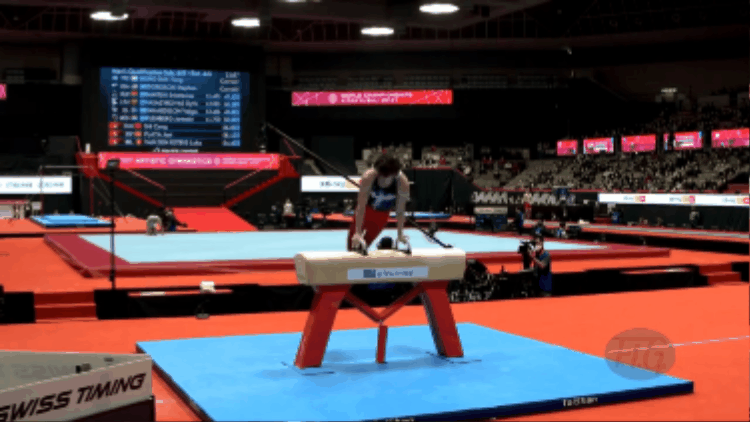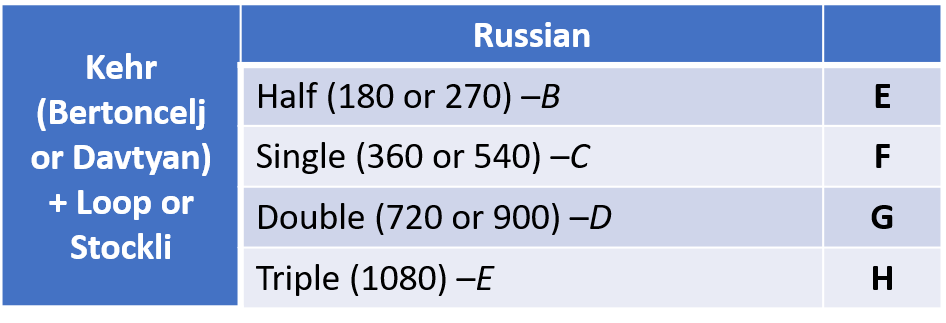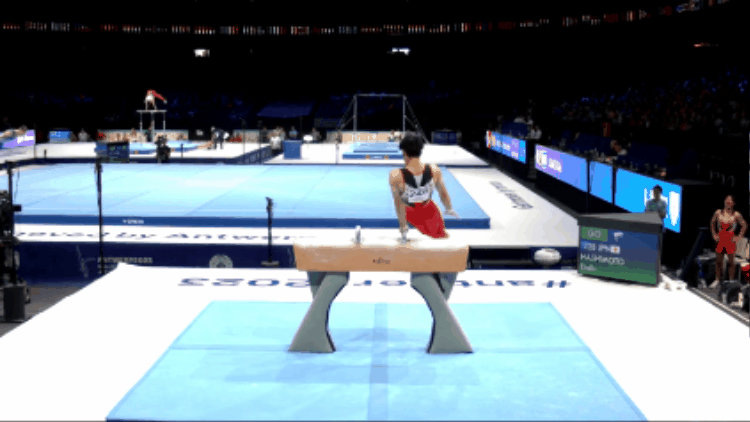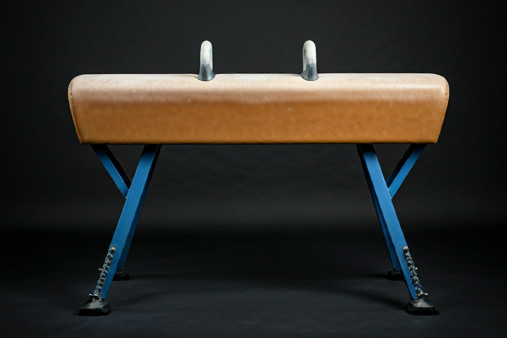Summary
Flop sequences on the pommel horse consist of skills like circles, stocklis, and kehrs performed consecutively on a single pommel, with specific rules governing their structure. A sequence is categorized as a D-Flop or E-Flop based on the number of skills included, affecting its difficulty value.
Additionally, Russian flop sequences, or combined sequences, incorporate Russian elements into a flop sequence to further boost difficulty.
A unique apparatus that athletes find difficult to perform and spectators struggle to grasp, Pommel Horse has many quirky skills and rules. A challenging yet impressive type of skill, flop sequences commonly appear in pommel horse routines, and are therefore one key to understanding pommel horse. Continuing our Simple Guide to Pommel Horse, let’s break down flop sequences on pommel horse.
What are Flop Sequences on Pommel Horse?
A flop sequence on pommel horse is a combination of circling elements performed consecutively on a single pommel handle.
You can think of flop as an acronym Full Loop on One Pommel.
So then, a flop sequence is a sequence of these full loops on one pommel. The individual flop skills have stand alone value, but when combined into a sequence count as one skill of greater difficulty.
Building Blocks of Flop Sequences
So what skills can a gymnast use in a flop sequence? Gymnasts can perform a few foundational skills on a single pommel to build sequences. These are flop skills, like circles, stocklis, and kehrs, or non-flop skills, such as Russians.
Circles (also called loops)
The most fundamental skill on pommel horse, the circle, or loops when used in a flop sequence, is a circular swing from front support through rear support and back to front support again. Additionally, loops may have a 1/4 turn. This is common when entering or exiting the single handle.
Stockli
Stockli’s are circles performed with half turns.
When performing stockli, a gymnast will finish facing the opposite direction they started. The gymnast completes the half turn within one circle, or also two hand placements. There are two types of stocklis – Stockli A and Stockli B (don’t ask me :
| Stockli A (DSA): | Stockli B (DSB): |
| – Circle with a half turn finishing with one hand on the single pommel and one hand off. – These usually finish back into double pommel circles, but sometimes finish with hands staggered on the pommel and leather. – Also known as a back-moore, performing a DSA in a flop sequence always ends the sequence. | – Circle with a half turn finishing on the handle. – Often used in the middle of a sequence to connect to another skill. – Although a DSB finishes with both hands on the handle, the athlete can end the sequence by stepping down from the handle during the next skill. |
Kehr
Kehrs are similar to stocklis, but involve a complete turn on one arm.
Exclusively performed as entries to one pommel, a kehr completes in one circle and all turning is performed in one hand placement. The two types of kehrs are called a Bertoncelj and Davtyan:
- Bertoncelj: 270° turn starting in front support. Like a Sohn.
- Davtyan: 270° turn starting in rear support. Like a Bezugo.
Russian
Circles performed entirely in front support. These technically aren’t loops, and therefore are non-flop elements. But these are still frequently performed in single pommel sequences.
Standard Flop Sequences
A standard flop sequence includes combinations of circles, stocklis, and kehrs performed consecutively on a single pommel.
The sequence finishes when the gymnast steps down from the single pommel. The code of points has a few rule restrictions on flop sequences:
- No more than two consecutive loops or DSB’s can be performed may be performed.
- Ex) Loop + Loop + Loop + DSA ❌
- DSA may only appear at the end of a sequence.
- Kehr elements like the Bertoncelj and Davtyan may only appear at the beginning.
These restrictions make logical sense. If you can rack up difficulty for only performing loops on one pommel, no one would ever add variation to their flop sequences, discouraging true single-pommel mastery. Likewise, a DSA naturally ends on two handles, so it will always finish a flop sequence, while Kehr elements always start on two handles, so they can only start a sequence.
The letter difficulty value of the flop sequence depends on how many “flops” the sequence had.
- D-Flop: three skill sequence – D value
- Examples:
- Bertoncelj + Loop + DSB
- Loop + DSB + DSA
- DSB + DSB + DSA
- Examples:
- E-Flop: four skill sequence – E value.
- Examples:
- Bertoncelj + Loop + DSB + Loop
- DSB + DSB + Loop + Loop
- Loop + DSB + DSB + DSA
- Examples:

Russian Flop Sequences (Combined Sequences)
A Russian flop sequence is a 1 or 2 skill flop sequence either preceded or followed by a set of Russians on one pommel.
The value of a Russian flop is best understood using the following charts:


Here is an example of D value combined sequence:

Further Resources
MAGnastics: A Guide to Flop Sequences on Pommel Horse
2025-2028 FIG MAG Code of Points
Mastering Outstanding Scissors

